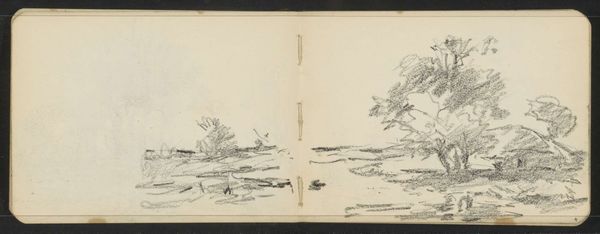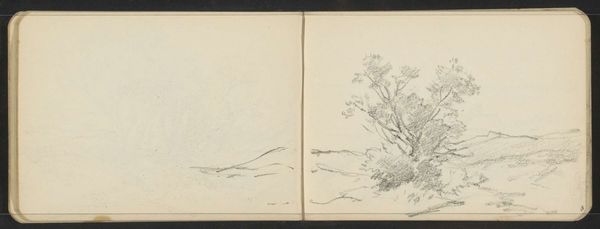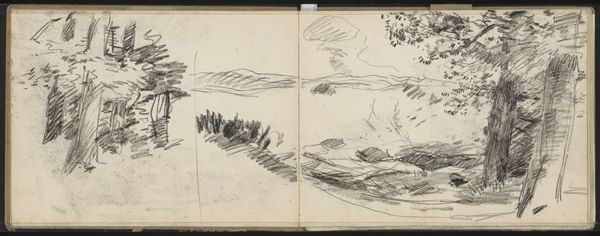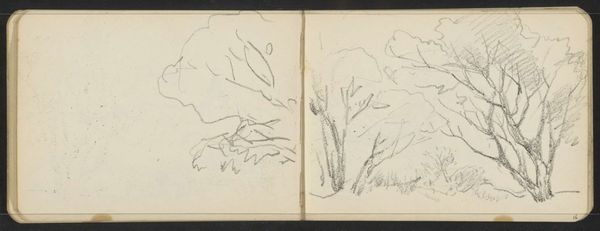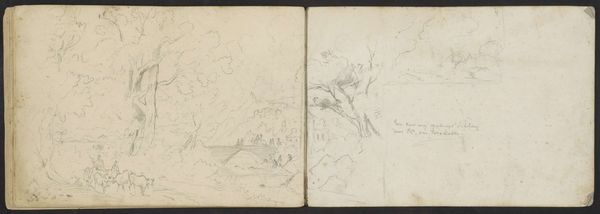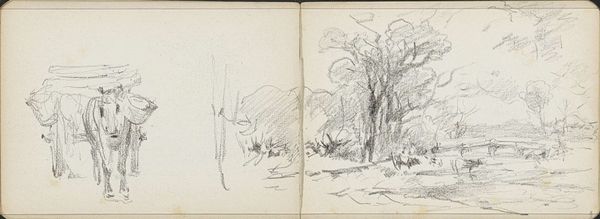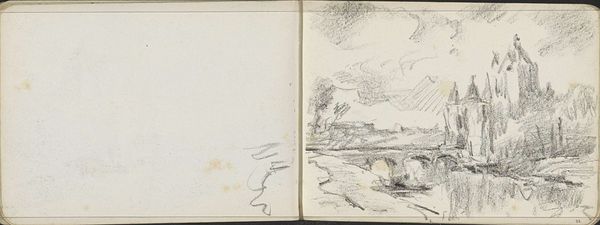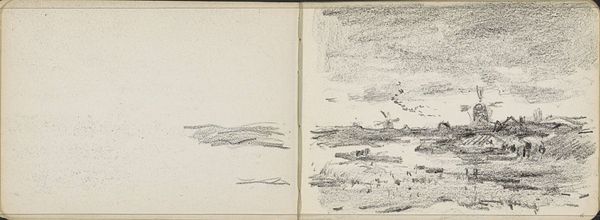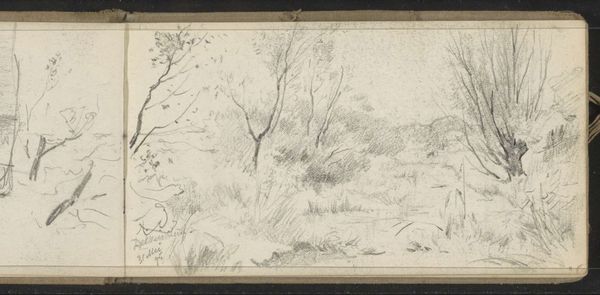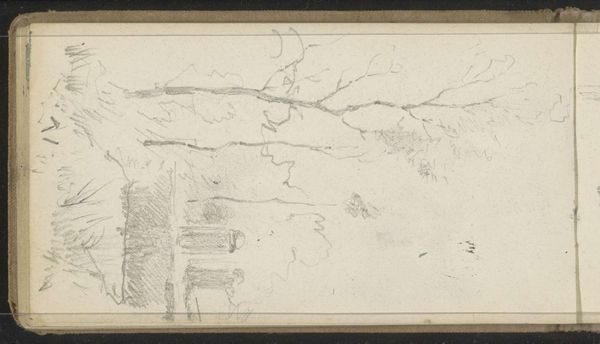
drawing, pencil
#
drawing
#
pen sketch
#
sketch book
#
hand drawn type
#
landscape
#
personal sketchbook
#
sketchwork
#
ink drawing experimentation
#
pen-ink sketch
#
pencil
#
pen work
#
sketchbook drawing
#
sketchbook art
#
modernism
Dimensions: height 115 mm, width 160 mm
Copyright: Rijks Museum: Open Domain
Editor: Here we have Willem Cornelis Rip’s “Bomen aan een waterkant,” a pencil and ink drawing dating from 1914 to 1916, seemingly taken from a sketchbook. I’m struck by its immediacy, this very personal glimpse into the artist’s observation. What can you tell us about it? Curator: This sketchbook drawing offers a fascinating look at the artistic process, situated against the backdrop of early 20th-century Dutch art. What stories do you think these quick studies and annotations might reveal about the artist’s relationship with the landscape? And also the market, since they all knew each other... Editor: Well, considering it's from the period right before and during World War I, does the simplicity of the landscape—just trees and water—reflect a kind of escape from the growing turmoil, or perhaps a connection to a simpler, more enduring world? Curator: That’s insightful. Art historians often analyze how artists of this era negotiated their relationship to nature amidst industrialization and war. Landscape wasn't just representation, but a stage for broader cultural and political anxieties. Also consider how access to art supplies impacted the accessibility of landscape creation in society at the time? How do public art programs encourage access to expression and reflection? Editor: So, a seemingly simple sketch becomes a lens through which we can view societal pressures and artistic responses. I never considered landscape as such a charged subject. Curator: Exactly. It reminds us to question the context around artistic creation and public reception, because how we understand a work can be deeply rooted in when and where it was made, but the institutions through which it survives as well. Editor: That makes me look at sketchbook art in a whole new way; it's not just personal practice. Thank you, it’s such a great new understanding.
Comments
No comments
Be the first to comment and join the conversation on the ultimate creative platform.
